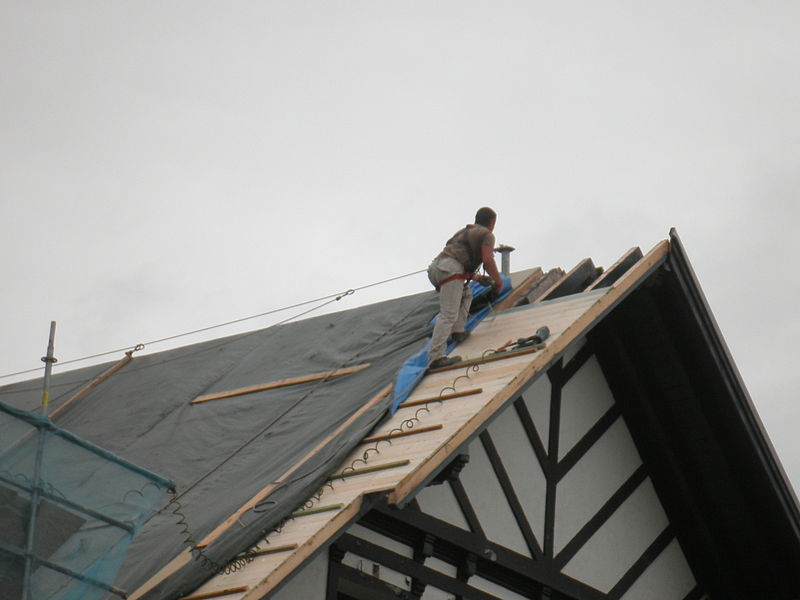If your roof shows signs of damage or wear, now is the time to get if fixed. Once the snow and ice build up on your roof, every thaw means running water that can creep into the tiniest cracks and gaps. The water can also re-freeze and expand, making the cracks worse. Melt water soaks into the wood and can do structural damage. This makes roof repairs even more expensive. According to Stevens Roofing Corporation “What people rarely realize is that fixing a roof leak is usually not the difficult part, it is the locating the source that poses a challenge.” Boy is that the truth. I recently spent literally 2 months trying to locate the source of a leak in my garage roof that had leaked inside a wall and caused significant wood rot. I would patch where I thought the water might be coming from and then wait for the next rain and check to see if it was still leaking. Then I would patch somewhere else and wait for the next rain. Eventually I found the source of the leak literally 30 feet away from where the water was coming into the wall. If you don’t want to go through the hassle I did you’ll need to hire a professional and that will cost money. If you haven’t been able to follow our advice and put aside an emergency fund for situations like this, here are some funding options to consider.
Government Assistance
If your roof has been damaged as a result of a major named storm, call FEMA. There are other options, such as the FHA 203K program that allows you to get federal loans. Payments are combined into your mortgage. Low-income families may be eligible for financial assistance. There are also some government grants available for historic homes, senior citizens, and other situations. Visit the government grants website or contact your local HUD office for more information. See also: Hurricane! How to Get Compensation after Significant Home Damage
Payment Plans
Some contractors or home improvement companies understand that expensive roof repairs can be a hardship for families, but at the same time repairs are an urgent necessity. They may be willing to offer payment plans rather than expect the total cost right away. These companies may still want to check your credit, but often the interest rate is competitive. Get several estimates from local roofing companies and be sure to ask each one about payment options. Be sure to take the final cost with interest into consideration before making your final decision.
Home Equity
For instance, if you only owe $30,000 on a home valued at $80,000, you’ve got $50,000 worth of equity you can borrow against. This could be provided to you as either a cash loan or a home equity line of credit (HELOC). A HELOC works much like a checking account with the initial funding coming from your home’s equity. You only pay interest on the amount you spend and you can repay it at your own pace. Home equity loans are also called second mortgages. Either way you’ll be paying interest, but if you have the equity you can get your roof repaired. If you fail to pay back the loan, however, there could be a lien placed on your house.
Personal Loans
If you have decent credit or something like a vehicle to use as collateral, you could take out a personal loan. A credit union is your best bet as they tend to charge the lowest interest rates. You may also get better terms with a local rather than a national bank. However, there are institutions that specialize in home improvement loans. You could even find some of these lenders online. In any case, before you sign make sure you read the fine print and understand exactly what your interest rate and payments will be.
If your roof needs repair now, the spring is too late to prevent water damage. Find a reputable roofing company to give you an estimate, and ask them about your best options. Compare the quotes and be sure you are comparing “apples to apples” one company might quote you based on 25 year shingles while another quotes you based on 30 year shingles. The difference in cost might only be a few hundred dollars but to increase the life of your roof by 5 years it could be well worth it.
You might also like:
- Another Post on the All Important Emergency Fund
- The 2 Types of Financial Emergency and What to Do For Each
- Financial Planning is Essential for Survival
- 4 Tips For Building Financially Stability
- Saving for College with a 529 College Education Plan
- Rainy Day Fund – Securing for Your Family’s Financial Future



